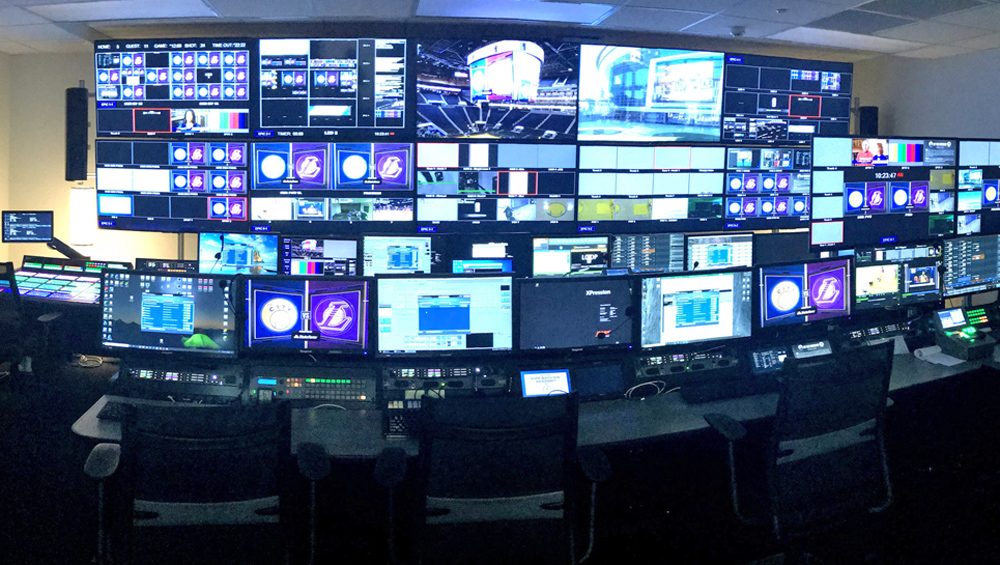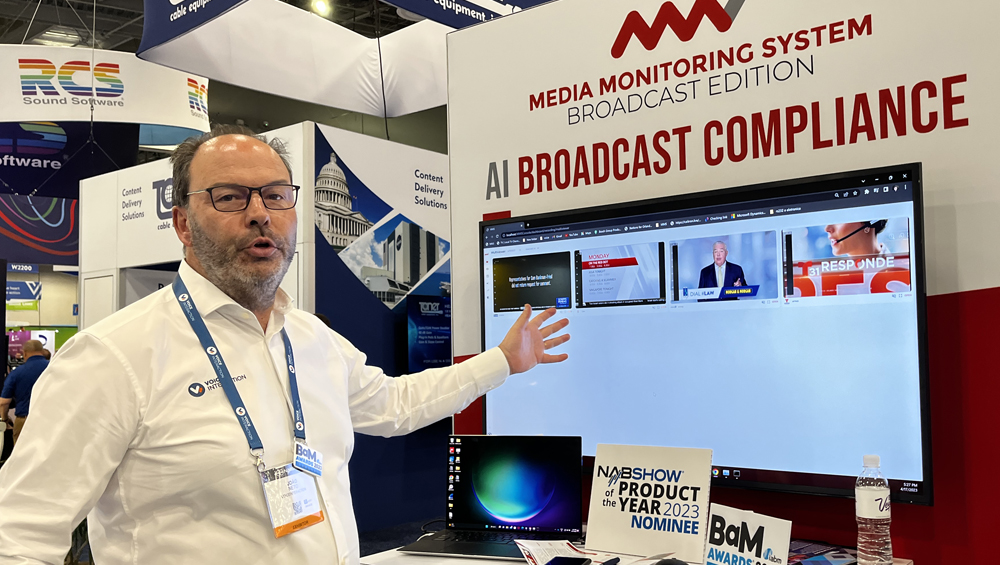
Multiviewers Cut Latency, Add Different Video Formats To Arsenal

Whether they monitor over-the-air (OTA) broadcasts or over-the-top (OTT) streams, multiviewers are “the eyes of the staff.”
As much as multiviewers have evolved over the years, they still serve one main function, which is to provide data in a way that can be used to make decisions about the content. The multiviewers often need to handle different formats of video, seamlessly, with little latency. At the same time, many broadcasters are seeking out solutions for an IP future, such as NDI-capable multiviewers. While some broadcasters prefer hardware-based multiviewers, browser-based multiviewers can offer flexibilities not possible with hardware.

John Mailhot
John Mailhot, CTO and director of product management for the infrastructure division at Imagine Communications, says multiviewers are as helpful now as they have ever been in television production. “They are the eyes of the staff,” he says. “Their entire view of everything about the show they’re trying to produce comes to them through the multiviewer.”
And as important as they are to ensuring the quality of content before it leaves the station, multiviewers have evolved alongside technology.
Once upon a time, he says, content was monitored via “a wall of little TV sets,” but as video quality and technology improved, multiviewers evolved from discrete monitors to screens with multiple picture in picture (PIP) elements for monitoring.
The dawn of high definition, he says, ushered in the dawn of the PIP-filled multiviewers now in use.
“The functional job of them hasn’t changed in all that time,” Mailhot says. “The operations team relies on that wall of monitors or now multiviewer with a lot of PIPs in it to be their eyes, to everything happening in the production.”

Ken Rubin at NAB 2023
And broadcasters continue to ask for more out of multiviewers, which for years were only used for monitoring OTA content. Now, notes Ken Rubin, SVP at Actus Digital, broadcasters also must monitor OTT streams and FAST channels. “They need to monitor over the air broadcasts and the workflow along with OTT broadcast that is simulcast out in a way that doesn’t force them to use additional resources,” he says.
Actus customers are able to monitor OTA and OTT streams on the same multiviewer screen, he says.
During the NAB Show in Las Vegas last month, Actus launched its OTT StreamWatch, which makes it possible to monitor FAST, IPTV and OTT streaming channels.
Mediaproxy CTO John O’Halloran believes multiviewers can be more useful for broadcasters when they are interactive.
“People have a bit of tendency to treat them as wallpaper,” he says. The idea behind having interactive multiviewers is that “if something goes wrong, you can reach in with a mouse and open it up and drill in.” In short, he says, an interactive multiviewer “starts to become a diagnostic tool.”

Kyle Wilken
Kyle Wilken, VP of firmware at Cobalt Digital, said customers are “increasingly asking for alarms and alerting” and configurable layouts with their multiviewers. For instance, if a video is frozen, the alert may be in the form of a red border around the PIP, he says, and Cobalt’s multiviewers offer pre-defined layouts as well as the ability to custom position and size each window.
“We have a new product under development,” he says. “We are evolving our multiviewers to keep up with industry needs.”

Joao Neto at NAB 2023
VoiceInteraction CEO Joao Neto says one way customers use the company’s Media Monitoring System is to see what’s going on with different channels in the same market. “They can also look to different stations from the same network and see what is going on in these stations,”
And, he adds, the MMS also generates metadata on the content, which can be used in reports.

Jonas Reucher
Jonas Reucher, software developer for Arkona Technologies, says customers want flexibility and resiliency out of multiviewers. “They definitely want flexibility in terms of layout and the amount of pictures they can show.”
But large and diverse layouts can be challenging for multiviewer environments, particularly when different video resolutions are in use, he says. Scaling incoming video is important because it reduces compute power, he adds. “When the signal is coming into Manifold Cloud, it is automatically scaled to half of its original resolution level. This saves on compute power and resources.”
Manifold Cloud runs on a broadcaster’s on-premises private cloud.
“We are trying to use principles used in cloud, but for the application of Tier 1 live broadcast providers,” Reucher says.
Imagine’s Mailhot says operations teams are looking for the ability to integrate different video formats and different color spaces in one in the canvas of the multiviewer and that production teams are being asked to do high dynamic range productions and integrate UHD and HD elements into the same production. This, he says, is a challenge because productions are being asked to do — or at least to be ready to do — high dynamic range and UHD production.
“Particularly for high dynamic range, you have to decide, am I going to display the multiviewer as HDR and convert all the signals that come in to look right on a hardware display, or am I going to display the output of the multiviewer in standard dynamic range and convert all the signals that come in into standard dynamic range?” Mailhot says. “You have to make a choice. You can’t mix the two and have it look reasonable.”
He says Imagine’s production multiviewers have HDR conversion capability and UHD capability built in. “We can mix HDR and SDR signals in the same multiviewer and have it look right for the operations team.”

Thomas Tang
Apantac’s new hardware-based NDI multiviewer won a Best of Show Award at NAB 2023. Apantac President Thomas Tang says the new product is the “first of its kind NDI multiviewer that is purely hardware” and it has less than one frame of latency.
That’s important, he says, because hardware multiviewers are more reliable and have less latency. “In a production environment, you want that reliability and smaller latency.”
Apantac “conquered” the NDI problem last year, but it took about a year to finalize the Mi-16-NDI Multiviewer because of the necessary NDI decoders.

Kevin Joyce
Kevin Joyce, TAG’s zero friction officer, says “multiviewers have been a hardware-intensive product,” and that virtualization of control rooms with a focus on software only is “the hottest thing going on with live production.”
And while software provides flexibility, it also tends to have more latency than hardware does.
“Latency is an issue in live production,” Joyce says. “TAG’s latency is 1 1/2 frames.”
As broadcasters virtualize live production control rooms, they need multiviewer tools that they can use anywhere and anytime, he adds. “The multiviewer is still essential in live production,” he says.
This year at NAB, Mediaproxy introduced the browser-based dashboard for its Monwall multiviewer.
The thinking behind that, O’Halloran says, is that sometimes it’s important to be able to access multiviewer content when not in master control. He says to think of the browser-based dashboard as a sibling, or a representative, of the Monwall in that it’s lower bandwidth and portable.
“The metadata that you’re looking at, the bandwidth, transmission, or loss of signal, that metadata can be brought to the browser,” he says.
































Comments (0)